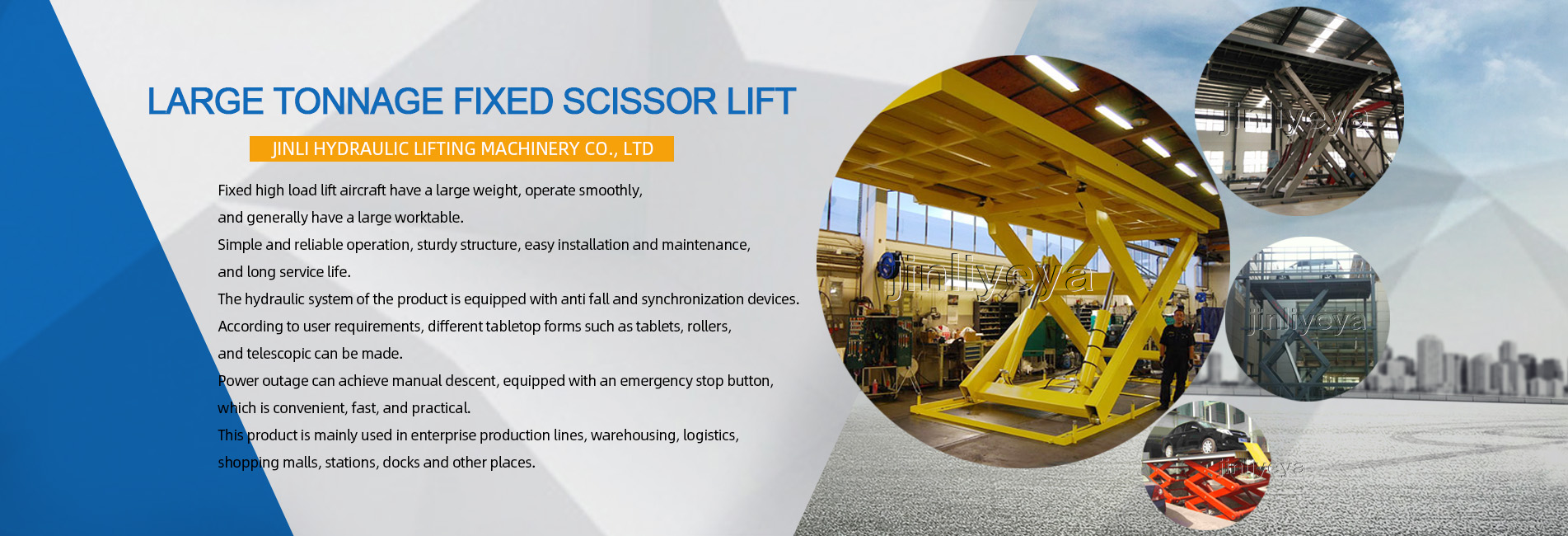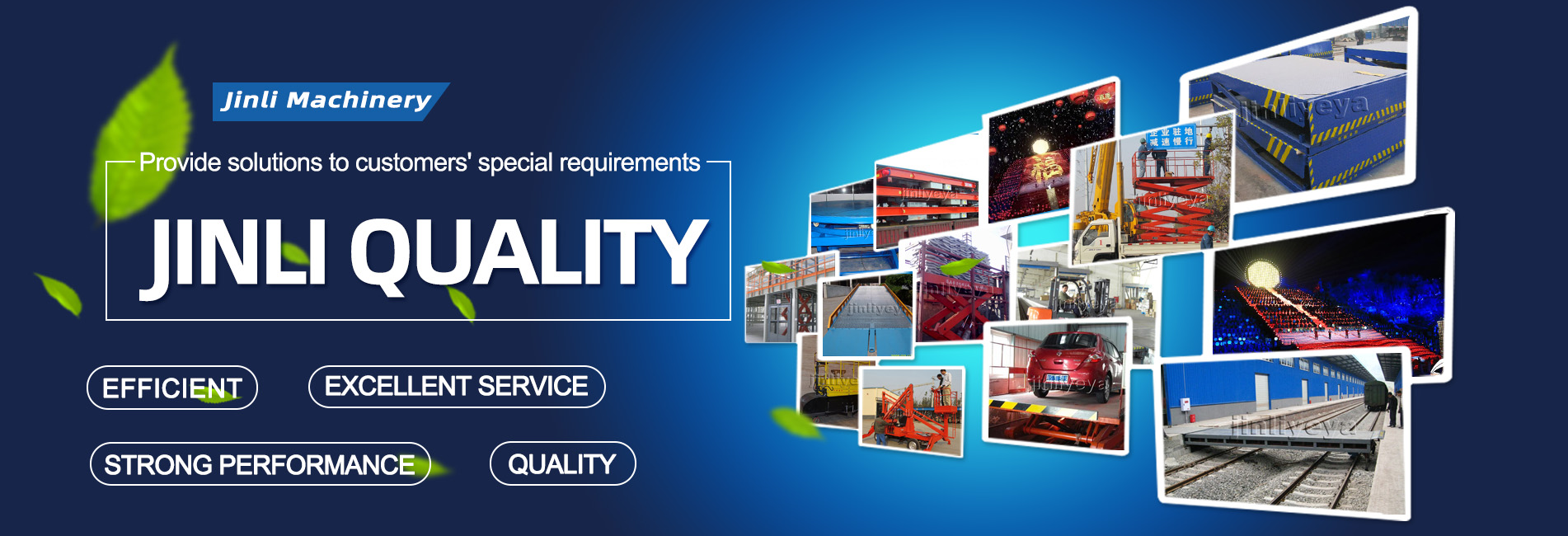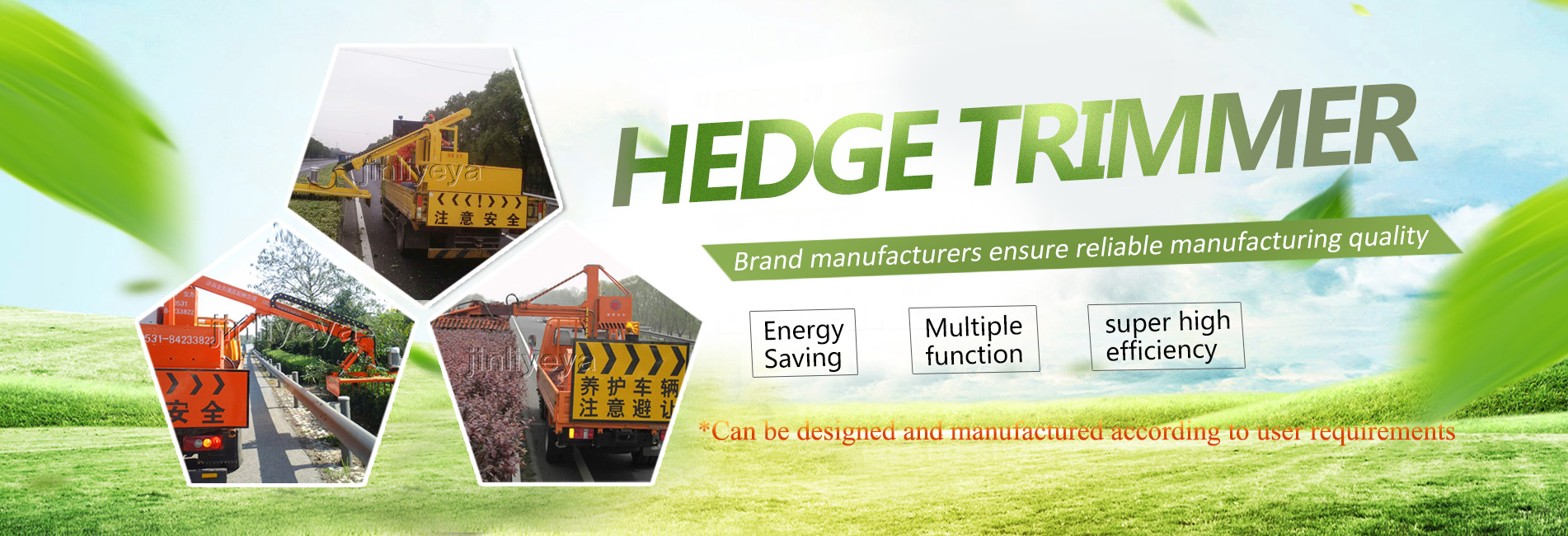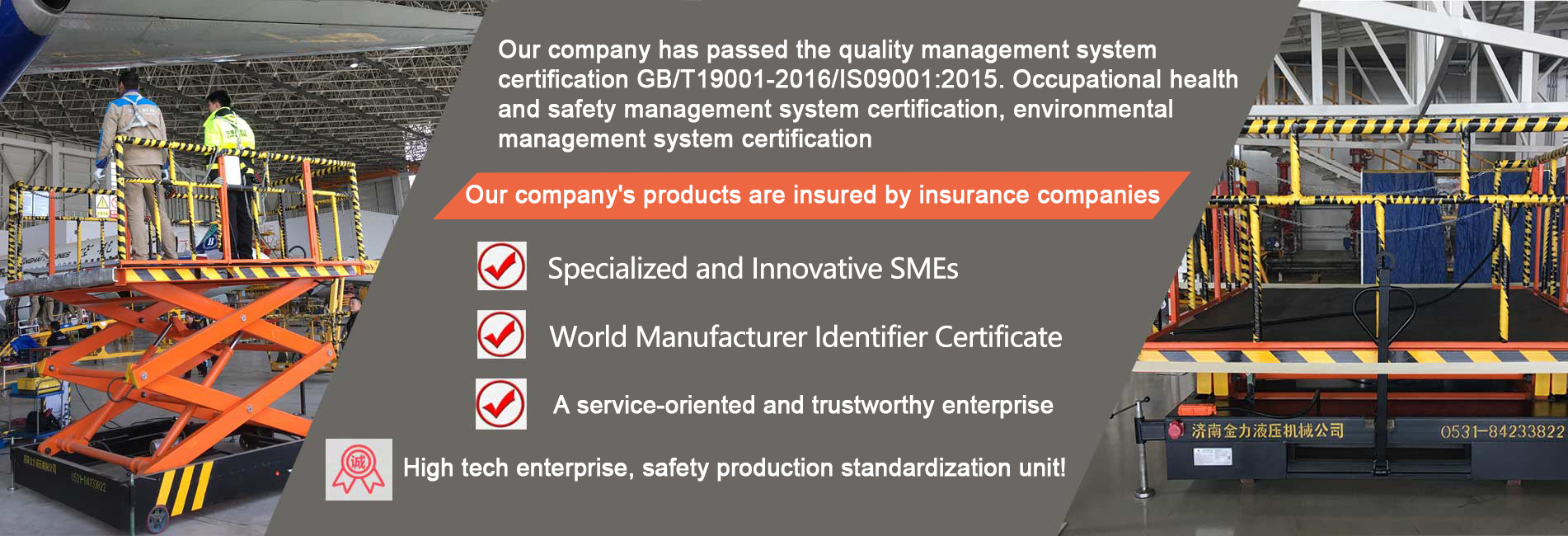1. Operators and operators are not allowed to work under the influence of alcohol or fatigue. During the entire operation of the elevator, both of them need to be highly focused.
2. Clean up the debris in the area around the elevator and inform nearby staff to pay attention to safety.
3. Drag the elevator to the work area and observe whether the elevator railing collides with other objects (such as walls, overhead cranes, columns, etc.) before fixing the position. During the ascent, the personnel on board should carefully observe the distance between the elevator railing and surrounding objects and adjust it in a timely manner.
4. Expenditure legs, adjust the height of the support legs to keep the lifting platform level; (Lifting without support is strictly prohibited. Before use, the lift must be firmly supported with support legs and balanced before lifting. When working on sloping ground, in addition to supporting the legs, wooden blocks or other objects should be filled under the wheels to prevent accidents caused by wheel rolling.)
5. Check if the power cord is properly connected. When connecting to the wall power supply, fasten and tighten it on the column. Prevent pedestrians from crossing the line and pulling off the power cord.
6. Move the limit switch to the designated position on the identification frame and fix it.
7. During an empty test drive, if the motor makes a running sound but does not lift, pay attention to whether the emergency stop lever is released or the power supply is reversed, and promptly troubleshoot the issue.
8. Work according to the prescribed load capacity, and overloading is strictly prohibited (with a load of 500kg). The lifting height is 8 meters.
9. Personnel should fasten their seat belts before boarding the aircraft.
During the ascent or descent of the elevator, personnel on board are not allowed to shake their bodies or railings casually. When shouting various commands, they must be clear and loud. Operators should be highly focused and perform various correct operations according to the commands of the onboard personnel at all times.
When the elevator reaches the appropriate position for maintenance equipment, the operator should push the emergency stop rod forward, and then pull it back when changing the position of the elevator. After arriving at the appropriate location for the maintenance equipment, the personnel on board first find a safe and secure position to fasten their seat belts.
During the maintenance period of onboard personnel, operators should not walk away or chat with others without reason. They should always pay attention to the various movements of onboard personnel and remind surrounding workers and pedestrians to pay attention to safety above to prevent falling objects from injuring people.
During the maintenance period, the onboard personnel should be careful not to casually throw debris downwards. When it is necessary to throw debris, they should cooperate with the operators to observe whether there are people walking around.
14. After the maintenance is completed and ready to fall, the personnel on board should first unfasten their seat belts and stand firmly. When the operator turns the screw down, it is important to only turn it one or two times. If there is an accident with the personnel on board, they can turn it back and stop the machine in a timely manner.
15. The personnel on board can only disembark after the machine has come to a complete stop.
After use, the user should clean the surrounding area and drag the elevator to its original position. If not in use for a long time, you can slightly prop up the support legs to avoid tire damage caused by prolonged disuse.
2、 Precautions: 1. Check if there is any oil leakage in the oil pipeline. 2. Check if the nuts at each intersection on the boom are tightened and if lubricating oil has been added before use. 3. Do not move the elevator during operation and when in the rising position. 4. Do not change the electrical control system arbitrarily; After work, keep all parts clean and lower the workbench to the termination height. When not in use, avoid direct sunlight and rain, and slightly support the support legs to prevent the tires from being damaged for a long time. Check the oil quality and level of the hydraulic oil every month. When the lifting platform is fully raised, the hydraulic oil level should be 40-50mm above the bottom of the tank. Check if the hydraulic oil has darkened, become sticky, or has sand. If so, replace it in a timely manner. Hydraulic oil needs to be changed once a year. When entering the elevator platform for maintenance, the working platform of the elevator must be suspended to prevent sudden descent and injury; Before disassembling the hydraulic system, the pressure must be relieved first to prevent oil from spraying out and causing the worktable to suddenly slide down.
2. Clean up the debris in the area around the elevator and inform nearby staff to pay attention to safety.
3. Drag the elevator to the work area and observe whether the elevator railing collides with other objects (such as walls, overhead cranes, columns, etc.) before fixing the position. During the ascent, the personnel on board should carefully observe the distance between the elevator railing and surrounding objects and adjust it in a timely manner.
4. Expenditure legs, adjust the height of the support legs to keep the lifting platform level; (Lifting without support is strictly prohibited. Before use, the lift must be firmly supported with support legs and balanced before lifting. When working on sloping ground, in addition to supporting the legs, wooden blocks or other objects should be filled under the wheels to prevent accidents caused by wheel rolling.)
5. Check if the power cord is properly connected. When connecting to the wall power supply, fasten and tighten it on the column. Prevent pedestrians from crossing the line and pulling off the power cord.
6. Move the limit switch to the designated position on the identification frame and fix it.
7. During an empty test drive, if the motor makes a running sound but does not lift, pay attention to whether the emergency stop lever is released or the power supply is reversed, and promptly troubleshoot the issue.
8. Work according to the prescribed load capacity, and overloading is strictly prohibited (with a load of 500kg). The lifting height is 8 meters.
9. Personnel should fasten their seat belts before boarding the aircraft.
During the ascent or descent of the elevator, personnel on board are not allowed to shake their bodies or railings casually. When shouting various commands, they must be clear and loud. Operators should be highly focused and perform various correct operations according to the commands of the onboard personnel at all times.
When the elevator reaches the appropriate position for maintenance equipment, the operator should push the emergency stop rod forward, and then pull it back when changing the position of the elevator. After arriving at the appropriate location for the maintenance equipment, the personnel on board first find a safe and secure position to fasten their seat belts.
During the maintenance period of onboard personnel, operators should not walk away or chat with others without reason. They should always pay attention to the various movements of onboard personnel and remind surrounding workers and pedestrians to pay attention to safety above to prevent falling objects from injuring people.
During the maintenance period, the onboard personnel should be careful not to casually throw debris downwards. When it is necessary to throw debris, they should cooperate with the operators to observe whether there are people walking around.
14. After the maintenance is completed and ready to fall, the personnel on board should first unfasten their seat belts and stand firmly. When the operator turns the screw down, it is important to only turn it one or two times. If there is an accident with the personnel on board, they can turn it back and stop the machine in a timely manner.
15. The personnel on board can only disembark after the machine has come to a complete stop.
After use, the user should clean the surrounding area and drag the elevator to its original position. If not in use for a long time, you can slightly prop up the support legs to avoid tire damage caused by prolonged disuse.
2、 Precautions: 1. Check if there is any oil leakage in the oil pipeline. 2. Check if the nuts at each intersection on the boom are tightened and if lubricating oil has been added before use. 3. Do not move the elevator during operation and when in the rising position. 4. Do not change the electrical control system arbitrarily; After work, keep all parts clean and lower the workbench to the termination height. When not in use, avoid direct sunlight and rain, and slightly support the support legs to prevent the tires from being damaged for a long time. Check the oil quality and level of the hydraulic oil every month. When the lifting platform is fully raised, the hydraulic oil level should be 40-50mm above the bottom of the tank. Check if the hydraulic oil has darkened, become sticky, or has sand. If so, replace it in a timely manner. Hydraulic oil needs to be changed once a year. When entering the elevator platform for maintenance, the working platform of the elevator must be suspended to prevent sudden descent and injury; Before disassembling the hydraulic system, the pressure must be relieved first to prevent oil from spraying out and causing the worktable to suddenly slide down.







